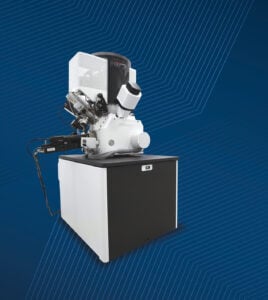
‘The Most Expensive Saw on the Planet’
Nestled in the newly renovated Materials Characterization and Processing facility in the Johns Hopkins Stieff Silver Building is “the most expensive saw on the planet,” says the facility’s director and professor of materials science and engineering, Mitra Taheri. “It can shoot gallium ions to slice and dice and cut materials down to the nanometer,” the metric unit of length equal to one billionth of a meter.
Used to make something on the nano scale, like a computer chip or microelectromechanical system, a focused ion beam scanning electron microscope (or FIB-SEM) can cut a human hair—approximately 50 micrometers wide—lengthwise into 10 to 20 slices. It can also drill a hole that is only a few nanometers in diameter.
Researchers at the MCP facility use the Helios G4 UC DualBeam FIB-SEM, made by Thermo Fisher Scientific, to fabricate nano devices and make thin slices of materials. They then take these slices and place them in the facility’s transmission electron microscopes, which can resolve individual atoms.
“It takes a lot of training to make these slices,” says Kenneth Livi, MCP’s director of operations and associate research scientist in the Department of Materials Science and Engineering, “but the effort is worth it to discover the inner workings of things.”




